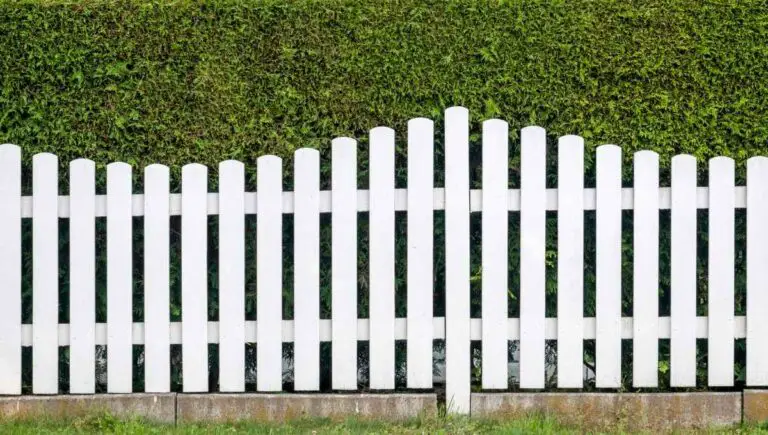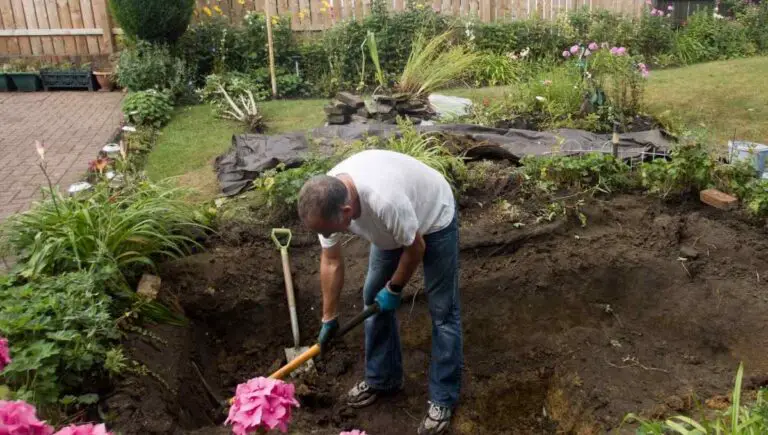Do I Need a Permit to Build a Shed? (The Official Answer)

A shed can add a wonderful charm to your property and provide ample storage space if you are running out. But, before you start building or shopping for a shed, you need to determine if you need a permit to build a shed in your area.
Whether or not you will need a permit for your shed mainly comes down to where you live. Some local zoning laws will say you need a permit while some say you won’t. In general, if your shed is less than 120 square feet, your chances of needing a permit are low.
However, sometimes size doesn’t even matter and you will still need a permit. We understand how this can be confusing so we have broken down how you can figure out if you need a permit to build a shed in your area.
This post contains affiliate links from Amazon and other stores. This means Yard Blogger may earn a commission if you make a purchase using any of our links. Please refer to our full affiliate disclosure policy for full details.
Here’s a Quick Pro Tip!
Most cities state that you don’t need a building permit for your shed if it is under 120 square feet, although you should always check your local ordinances.
Thankfully, Amazon has some fantastic prefab options that fit into this size category:
1. KETER Manor 4×6 Shed – Perfect for storing lawn rakes and shovels
2. KETER Factor 8×6 Shed – Great for lawnmower and bike storage
3. Best Barns 10×12 Shed – Charming farmhouse design with ample storage
What Is a Shed and Do You Need a Permit to Have One
To first conclude if you need a permit for a shed, you need to know exactly what a shed is. Keep in mind that the technical definition of a shed will differ from city to city, according to the building codes.
What Is the Legal Definition of a Shed?
A shed is a structure typically built out of prefab, wood, or metal that stands alone in the backyard of a property. They are used mainly for the storage of small machinery, such as lawnmowers, weed whackers, and other tools.
A shed also adds a special charm to a backyard, especially the ‘she-sheds,’ that are trending as of late. These sheds are less common but essentially the shed is used as personal living space instead of storage space.
What Differentiates a Shed From a Garage?
The differences between a shed and a garage come down to the location, the size, the build, and the use. Garages are larger than sheds and can be constructed at the front, side, or back of a house.
Main differences between a shed and a garage:
- Size – A garage is typically one or two stories and larger than a shed. A shed is typically only 120 square feet and one story.
- Location – A shed is typically only in the backyard whereas a garage can be beside a house, attached, at the front, or behind.
- Build – A shed is typically portable, placed on blocks or skids. A garage has a concrete pad or foundation.
- Use – A shed is mainly used for storage with no access to electricity or water, whereas a garage can have electricity, plumbing, and gas.
Do You Need a Permit to Build a Shed?
Whether or not you need a permit to build a shed depends on several factors, the main one being your location. All cities have different bylaws that consider the specific zoning laws and building codes.
Before constructing your shed, you should always check with the specific bylaws of your city. Failing to do so may result in your shed not being able to be built, or worse, torn down.
To display the different laws regarding shed permits, a document from Muskegon, Michigan, states all sheds need a development permit to be built legally.
Unlike the laws of Muskegon, this document from New York City states that any shed under 120 square feet does not require a permit.
Thus, it is crucial not to think one rule applies to the whole country of the United States. You also need to check with your HOA, if you have one, to determine if they will allow the shed to be built.
Additionally, if you live in a national heritage area, more rules may apply to you. For example, these areas typically have stringent building and renovation rules that the homeowner must follow.
You might also enjoy our post on If You Need a Permit to Build a Treehouse
What are the Common Requirements For The Shed’s Permit?
Sheds that are more likely to require a permit, regardless of where you live, are typically larger than 120 square feet and will have certain utilities such as gas, plumbing, and electricity.
It is essential to require a permit if your shed will have utilities because you need to ensure that the area of your shed is suitable to house those utilities and that the utilities will be installed correctly.
Depending on your area, you won’t need a permit if your shed stays below a maximum height. In New York City, that height maximum is seven feet and six inches.
The shed must also not be permanently fixed to the ground.
What Size of Shed You Can Have
Now that we have determined whether or not you need permits to build a shed mainly comes down to where you live and the local bylaws, let’s determine when you will need a permit regardless of your location.
This usually is determined by the size of the shed.
What Are the Rules for Building a Shed?
To build a shed without permits, the shed must not exceed 120 square feet, the height cannot be taller than 12 feet, and the homeowner must not hook up any utilities.
Keep in mind that this does not apply to all areas. Some areas still require a permit, even if your shed meets these requirements.
These specific laws are for Los Angeles, where they allow you to build without any permits if you meet those requirements.
Before you build your shed, you should also remember that you may only be able to build your shed in a particular area, such as in your backyard, a certain distance away from property lines.
Of course, it all depends on your local zoning and building laws.
How Large of a Shed Can I Build?
On average, most areas require that your shed be no larger than 120 square feet. In addition, your shed can not exceed a certain height, typically under eight feet, and have only one story.
Anything more significant will require a building and planning permit, especially if you plan to hook up utilities to the shed, even the most miniature light bulb.
This is all in place to ensure that your shed follows local building code and zoning laws that enforce safety for you and your neighbors.
You might also enjoy our post on If You Need a Permit to Demolish a House
How Large Can My Shed Be Without Needing a Permit?
Typically your shed can be no larger than 120 square feet to avoid a building permit in most areas. But, if you plan to install utilities, other permits may be required.
Again, size requirements will differ between municipalities. So, before building your shed, you should check with your local laws to ensure you are building your shed legally.
But, in most cases, you will be free of needing a permit if you keep your shed under 120 square feet.
How Big of a Shed Can I Put In My Backyard?
Most cities will allow you to build a shed without needing a permit as long as the shed is no larger than 120 square feet, among other limitations, and does not include any utility installations.
Your shed can be larger than 120 square feet if you don’t mind obtaining permits.
You will also have more freedom with what you can do with the space, such as turning it into the ever-popular she-sheds to be used as a living or sleeping space.
How Big of a Shed Can I Build Without a Permit in California?
California states that you do not need a building permit if your detached accessory structure, including a shed, does not exceed 120 square feet and does not contain utilities such as plumbing and electricity.
However, differing bylaws will determine whether or not you need other permits. For example, in Woodside, California, the zoning code states that you need a planning permit to build a shed if they are under 120 square feet.
What Size Shed Is 120 Square Feet?
A shed that is 120 square feet is considered a small shed (10”x12”). This shed size is perfect for storing gardening tools or light yard work equipment- especially if your garage is bursting at the seams.
This shed from Amazon is just under 120 square feet (10”x8”) and is the perfect size for storing tools and lawnmowers.
Many sheds of this size are available since they are the most practical and easiest to install since you typically don’t need a permit.
What Size Shed Is Most Common?
Sheds that are under 120 square feet are the most common since they are the easiest to install, considering they don’t need any building permits in most cases. They are also portable, which makes them more desirable.
Although these sheds are among the smallest, they still offer many great features that are generally included in larger ones.
For example, you can expect enough room for two double doors, windows, and plenty of shelving space.
You might also enjoy our post on If You Need a Permit to Run a Gas Line
Are There Height Restrictions on Garden Sheds?
Height restrictions are common for garden sheds, and you need to follow them to build your garden shed legally. Specific height requirements depend on your city’s zoning laws.
The square footage of your shed is not the only consideration you have to think of- you also have to think about the height. But, again, this will vary depending on where you live.
For example, in Phoenix, Arizona, the maximum height for your shed is 15 feet, but in Sacramento, California, the maximum height is 9 feet.
Where to Place your Shed
Since we now have the ideal size decided for your shed, we need to discuss the rules regarding where your shed can be placed. You may be surprised to hear the answer.
Keep in mind again, different rules apply depending on where you live.
Where Should I Build My Shed?
Where you should build your shed depends primarily on what your zoning laws allow. These will differ between cities, so ensure that you check them before you begin construction or installation.
For example, the township of South Orange, New Jersey, states your shed must be 3 feet from the side yard and rear yard property lines.
It also must be 10 feet away from any other accessory structures and 20 feet away from the primary dwelling.
Should I Build My Shed Under a Tree?
If possible, it is wise not to build a shed under a tree, especially in locations with low-hanging branches. The branches can scratch the sides and the roof of your shed, resulting in damaged siding.
If you place your shed under a big tree, heavy branches could fall on your shed and damage the structure.
Even placing your shed under a young tree is a bad idea since you can’t be sure where the branches will grow.
How Close to the Property Line Can I Put a Shed?
Your local zoning laws will determine how close you can put your shed to the property line, but, on average, it is typically three to five feet away.
If you decide to put a shed close to your property line, you may want to consider asking your neighbor’s for approval.
Although it is not necessary to have their permission, you may be interfering with the enjoyment of their property by constructing a shed in a specific area.
How Far From the Property Line Can I Build a Shed in California?
California states that your shed can be placed no closer than three feet from the side or rear property lines. Additionally, the shed can be no closer to the front property line than the front wall of the main structure.
Local ordinances declared by your city in California may differ from these rules, but, in general, three feet is a common requirement. In addition, the shed can only be in your side or back yard and not in your front yard.
You might also enjoy our post on Do I Need a Permit to Regrade My Yard?
Can I Build a Shed Next to My Fence?
You can build a shed next to your fence as long as it is three feet away from the property line of your rear or side yard. You also must follow other zoning laws regarding your shed.
As long as you follow all other requirements of building a shed, you can build the shed anywhere along the fence as you like. Just ensure that you have enough room left to maintain the grass.
What Happens if a Neighbor Objects to My Building Plans?
It is essential to ask your neighbor for permission about your building plans. The reasons can be just plain petty, but they can also be somewhat valid in which they can take legal action.
If your neighbor has reasons to claim your shed is causing them a disruption to the enjoyment of their property, they may be able to file a private nuisance claim.
They can call the local authority about their issue and explain why the fence is bothering them. If they prove that you in no way tried to obtain their permission, they may have more grounds to go along with the claim.
The Cost of a Shed
When putting up a shed, how much your shed will cost you is also worth considering. Sometimes building a shed can be cheaper, but, of course, it is much more work.
Is It Cheaper to Build or Buy a Shed?
Building a shed is undoubtedly the cheaper option compared to buying one. Once you consider all the premade costs, including delivery and possibly installation, building it yourself is much more cost-efficient.
You can also design the shed to be exactly what you need, which can be an inspiring project to take on. Finally, to save yourself even more money, you can consider renting any tools you may need instead of buying them.
You might also enjoy our post on How to Find Out If Your Neighbor Has a Building Permit
What Is the Cheapest Way to Build a Shed?
The cheapest way to build a shed is to use pallets. Pallets can be found free on the roadside or at the back of warehouses or big box stores. Usually, employees are more than happy to have some pallets taken off their hands.
Once you have your pallets, you need to gather all the tools you will need. You can either rent or borrow some from your friends or family for any tools you don’t have already.
This can save you at least $1000, depending on what you need.
How Much Does a Prefab Shed Cost?
A prefabricated shed will cost you around $1500 – $4000, usually depending on the size and materials used. Although this is more expensive than building one, it requires less time and effort.
For example, this shed costs $1030 and is 10”x12”. This type of shed is considered small and typically doesn’t require a building permit to install.
This shed costs $4056 and is 20”x8” on the higher end. With the extra space and features, you get what you pay for with this shed. Also included is a warranty in case your shed ever has any defaults.
Related Questions
Do I Need a Permit to Build a Treehouse?
In most cases, a permit is not required to build a treehouse. For example, basic treehouses that solely serve as a simple hang-out spot for your kids will not need a permit, but anything more elaborate, might.
If you’re thinking of building a house amongst the treetops, with electricity and plumbing required, you may need a permit. But, if you’re just planning a simple treehouse made of just wooden planks, you likely won’t need a permit.
Do I Need a Permit to Build a Garage?
A permit is definitely required to build a garage. Typically you will need a building permit and building plans before starting construction.
You will need to provide your city with building plans, including the dimensions of the garage and any utilities you will be running through the garage, such as gas and electricity.
How Much Is a Building Permit?
A building permit can cost anywhere from $50 to $3000 depending on the size of the job, how many inspections are necessary, and where you live. Typically the cost of a building permit is higher in cities.
A building permit can end up being expensive, but it’s necessary to be able to build your structure and do it safely. The cost of your permit will be higher if your square footage is higher and you require more than one inspection.
Final Thoughts
Before building or buying your shed, you should consult your city’s local laws to ensure that you install your shed within legalities. Failing to do so can result in your shed being taken down, and you could get fined.
Either way, a shed is an excellent additional structure on your property that can add incredible charm and ample storage opportunities. So, if you are thinking of building a shed, have fun and get creative!









